
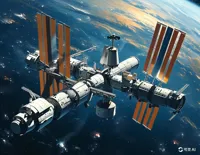


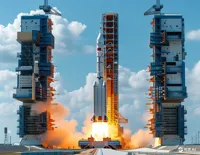
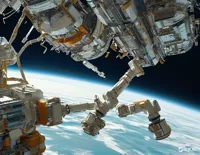
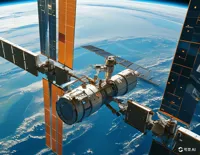
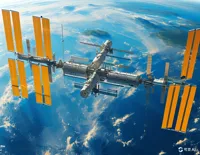
In the vast expanse of the cosmos, a new star belongs to humanity—the Chinese Space Station "Tiangong." It is not only the pinnacle of China's space endeavors but also a bridge for international cooperation and exchange. Since its inception, Tiangong has welcomed partners from around the globe with open arms, working together to explore the mysteries of the universe.
The journey begins in 1992 with the official launch of China's manned space program, codenamed "Project 921." This ambitious plan aimed to send Chinese astronauts into space and establish a space station that would call the heavens home. Over the span of three decades, Chinese space professionals have forged ahead step by step, from the Shenzhou spacecraft to the Tiangong laboratory, from unmanned docking technology verification to space station construction, each phase a testament to their sweat and wisdom.
In 2021, the Tianhe core module of the Chinese Space Station was successfully launched into its designated orbit, marking the comprehensive start of the construction of the Chinese Space Station. Subsequent launches of the Wentian and Mengtian experimental modules docked successfully with the core module, forming a complete space station complex. Tiangong is not only a long-term on-orbit work and living platform for Chinese astronauts but also a brand-new stage for international scientific cooperation.
The construction of the Chinese Space Station adheres to the principle of "peaceful use of outer space for the common development of mankind," showcasing China's achievements in the space domain and its commitment to international cooperation. China has engaged in cooperation with multiple countries and international organizations, offering experimental opportunities, sharing data, and research outcomes. This open attitude and spirit of collaboration have made the Tiangong laboratory a truly international scientific platform.
Within the Tiangong laboratory, international cooperation projects span various scientific fields, from biology and physics to material science, where scientists from around the world can conduct their experiments. For instance, the "Galileo Program" in collaboration with the European Space Agency aims to study fluid dynamics in microgravity environments, and the "Mars Life Program" in partnership with Russia seeks signs of life on Mars. These cooperative projects advance scientific development and deepen friendships and understanding among nations.
The construction of the Chinese Space Station is not only a leap in Chinese space technology but also a significant contribution to the global space endeavors. The successful operation of the Tiangong laboratory demonstrates China's robust capabilities in the space arena while providing valuable experience and technical support to the international community. In the future, the Tiangong laboratory will continue to work hand in hand with countries worldwide on the path of space exploration, jointly writing a new chapter in the history of human space endeavors.